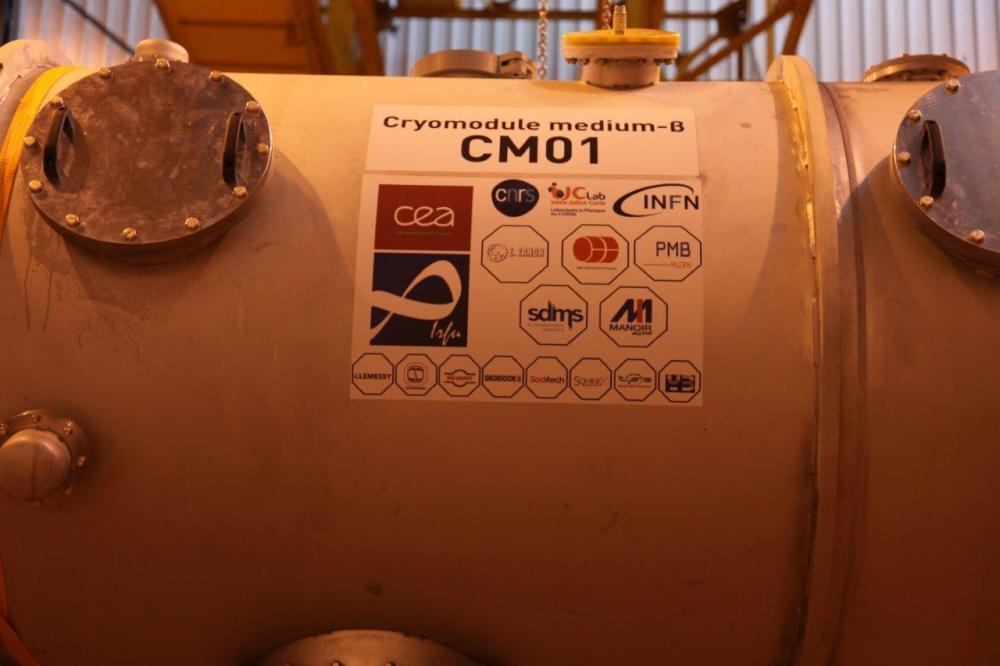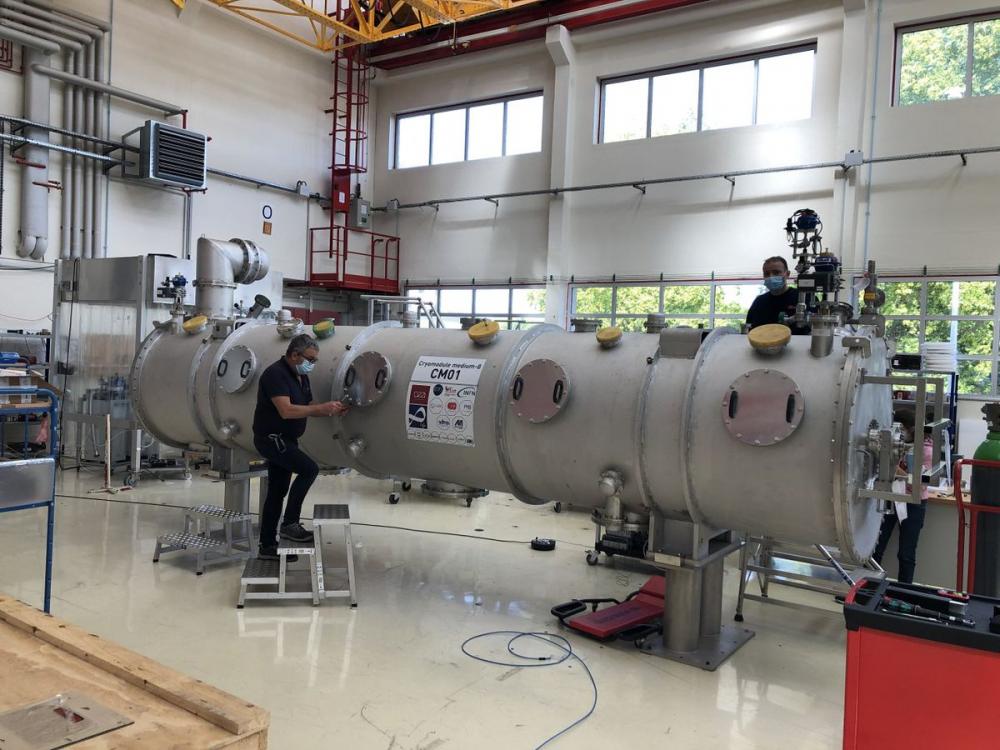A year and a half after the delivery of the prototype cryomodule (CM00) to ESS, the first production medium beta cryomodule (CM01) has now arrived at the ESS site. It left CEA on September 22, 2020 for a two-day trip to Lund, Sweden. The Irfu teams had previously validated the RF and cryogenic performances of this cryomodule. It will be tested again on the ESS test bench before being integrated in its final position in the accelerator tunnel. This is a first step. Starting next year, ESS will receive an average of one cryomodule per month for 3 years.
Downstream of the RFQ (radio frequency quadrupole), the beam is accelerated by other cavities adapted to the increasing speed of the particles moving along LINAC. The 30 cryomodules with elliptical cavities, 9 medium beta and 21 high beta, are the most important contributions of Irfu
Beta (β= v/c) indicates the speed of proton beams compared to the speed of light; medium beta cavities have a β of 0.67 (for energies between 216 and 571 MeV) and high beta cavities have a β of 0.86 (energies between 571 MeV and 2.0 GeV).
Loading of the cryomodule CM01 in its container
The 30 cryomodules are integrated in Saclay under the responsibility of Irfu by the industrial operator B&S on the technical assembly platform, called "ESS Village", composed of a line of 6 successive assembly stations. Six of them (the first 3 medium beta CM01, 02, 03 and the first 3 high beta CM31, 32 and 33) are tested at full power (1.1 MW) at Irfu.
The assembly of a cryomodule (6.6 meters long and 5.5 tons) involves 11,000 parts and mobilizes twelve people on the B&S side with the support of an Irfu team (DACM and DIS).
The assembly of CM01 was spread out over a good year (assembly + test); the expected integration rate (without test) is 1 cryomodule per month and 1 cryomodule in 3 months for those tested in power.
The loading at the CEA (the 2 photos on the left), the departure to Lund by truck, and the cryomodule being received in Lund (photo on the right). It will then be tested again in power before its installation on the beamline.

Learn more about the ESS project
Contact: Christophe Mayri
• Accelerator physics and technology › R&D and Instrumentation for Future Accelerators
• Accelerators, Cryogenics and Magnetism Division (DACM) • The Electronics, Detectors and Computing Division





